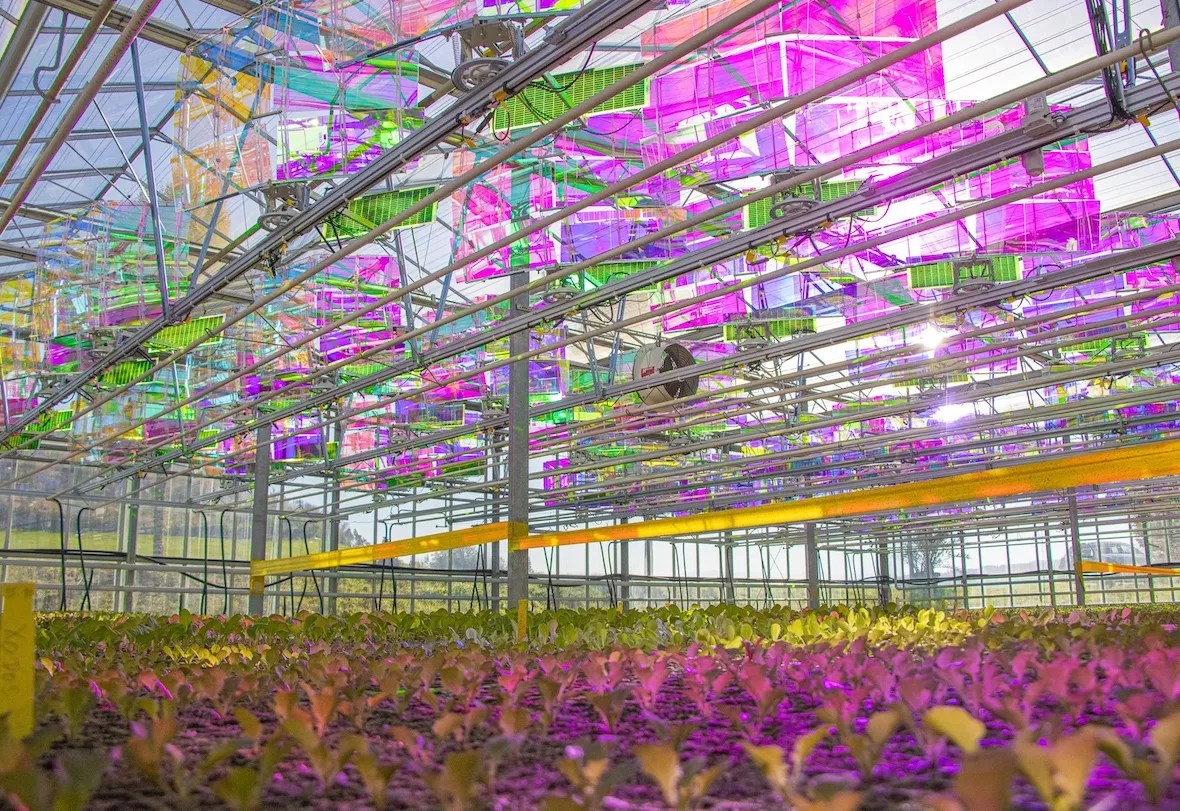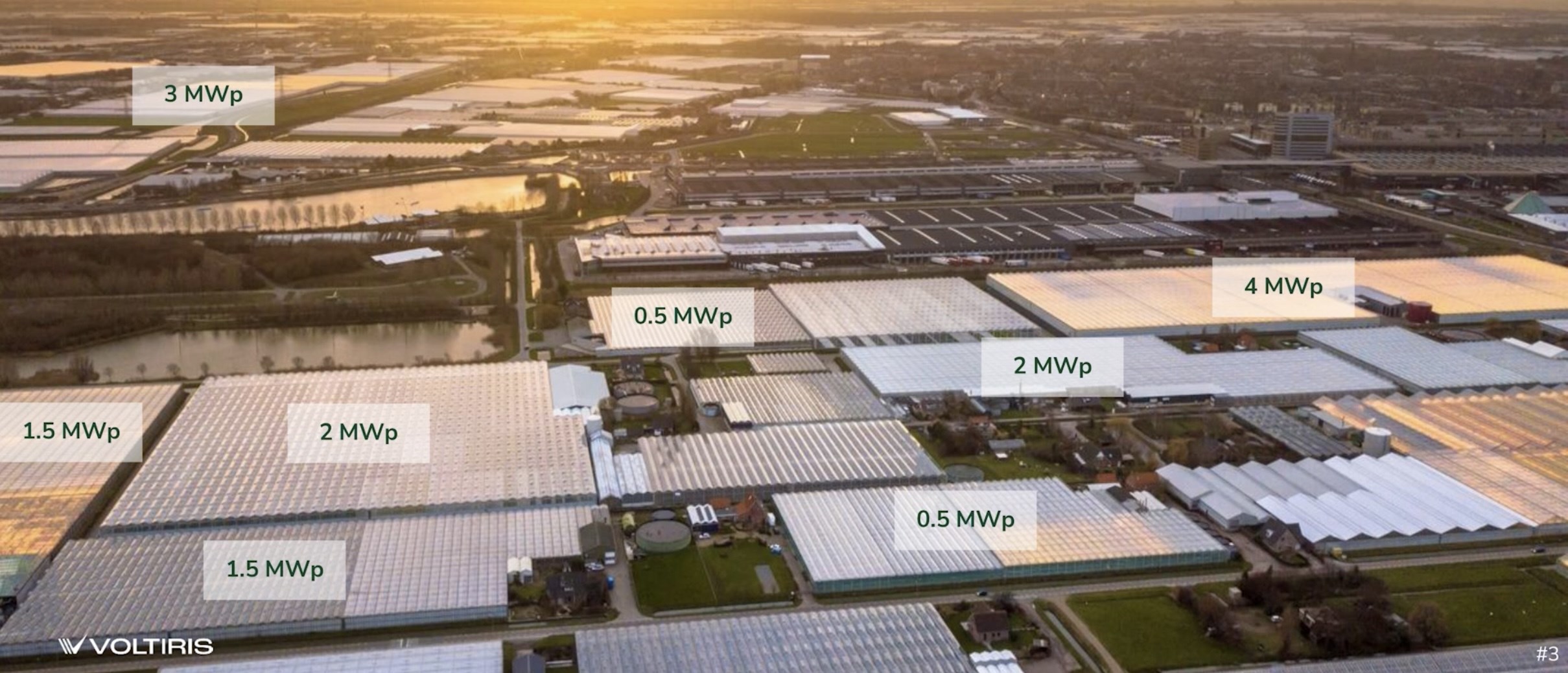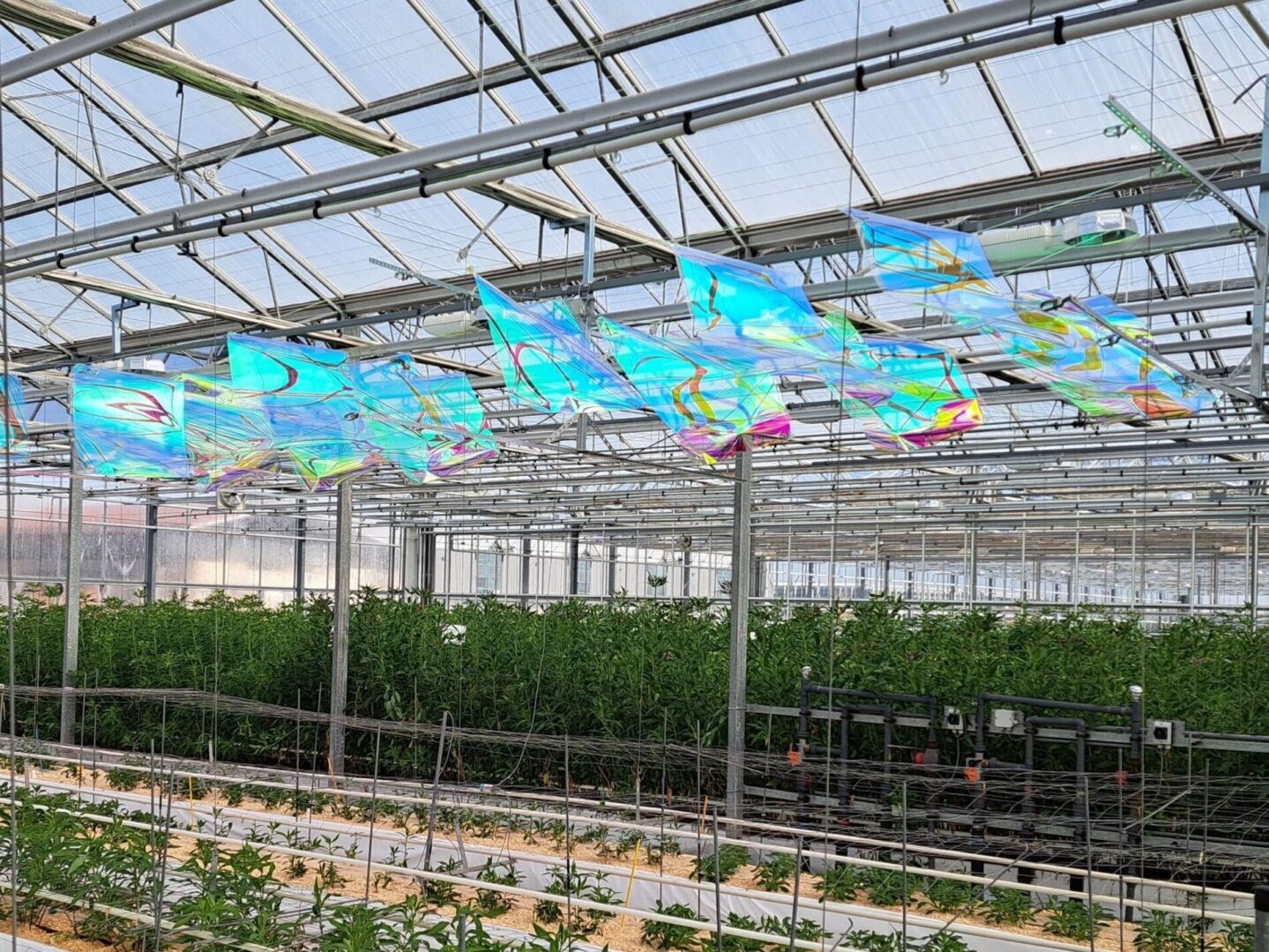See Full Size
In the greenhouse, extremely fast-growing plants are usually grown and they need all kinds of sunlight. Therefore, it is almost impossible to use ordinary solar panels in this greenhouse because if a double-sided panel is placed, it reduces sunlight by 70%. The solution of the new initiative provides the energy that plants need while continuing to produce electricity.
See Full Size
Thus, while plants have the energy they need to grow, growers produce the electricity required for the greenhouse. In this way, the heating need in winter can be met entirely by self-consumption. A heat pump can be used for this, heating can be provided when it is cold, cloudy or at night. If the greenhouse is in a place where there is generally no need for heating, such as a Mediterranean climate, the greenhouse can provide additional income to the farmer by providing electricity to the grid, thanks to the dual-purpose use of limited land area.
See Full Size
Increases revenue
The company has proven in the tests it has conducted in greenhouses for the last 2 years that the revenue is not affected, and in some cases, it even increases it. One of the reasons for this is that plants reduce water consumption due to unnecessary heating. Another benefit is that it reduces the number of harmful insects by one third. The estimated reason for this decrease in insects is that they reproduce less as a result of the disruption of suitable habitat for insects, as the wavelengths of light transmitted downwards change. Another benefit is that by converting a certain light spectrum into electrical energy, the greenhouse does not heat up too much during the summer months.
A building with 200 flats in Norway produces more energy than it consumes
150 Watt energy is produced per square meter
The light reflected from the spectral filter is focused up to 3 times, and the system tracks the sun according to its position in the sky. Thanks to all these, the amount of electrical energy produced per m2 is 150 Watt It has reached such an impressive value. Considering that normal panels reach 200 Watt/m2 under the same conditions, the efficiency is quite sufficient.
The initiative has now started sales to greenhouse growers across Europe. However, since the system has a long payback period, those who want it can install it themselves by making an electricity sales agreement and covering all expenses. In this case, while farmers do not have money for installation, the only thing they need to do is to commit to purchasing a certain amount of electricity below the market price for 15-20 years.
In an agricultural field where 3000 modules are integrated into an area of 10 thousand square meters 450 MWh per year electricity is produced. The company is a Swiss energy distribution company EBL He carries out projects together with (Genossenschaft Elektra Baselland). First of these, thanks to the integration made on a farm in the town of Füllinsdorf, 50 MWs of electricity will be produced annually in the first phase. Next year, in the spring, more installations will be made and most of the electricity used by the greenhouse will be produced on its own.
Such technologies are nice, but there are a few conditions necessary for them to become widespread. For example, one of them, the largest supermarket in Switzerland, requires that the greenhouse products it receives be zero carbon as of January 1, 2026. Another factor is that the Swiss electricity distribution company, with which he collaborated in the initiative, includes special funds to support such projects in its green electricity packages. A few such effects break the perception of what is needed in the market and pave the way for investment.
This news our mobile application Download using
You can read it whenever you want (even offline):








